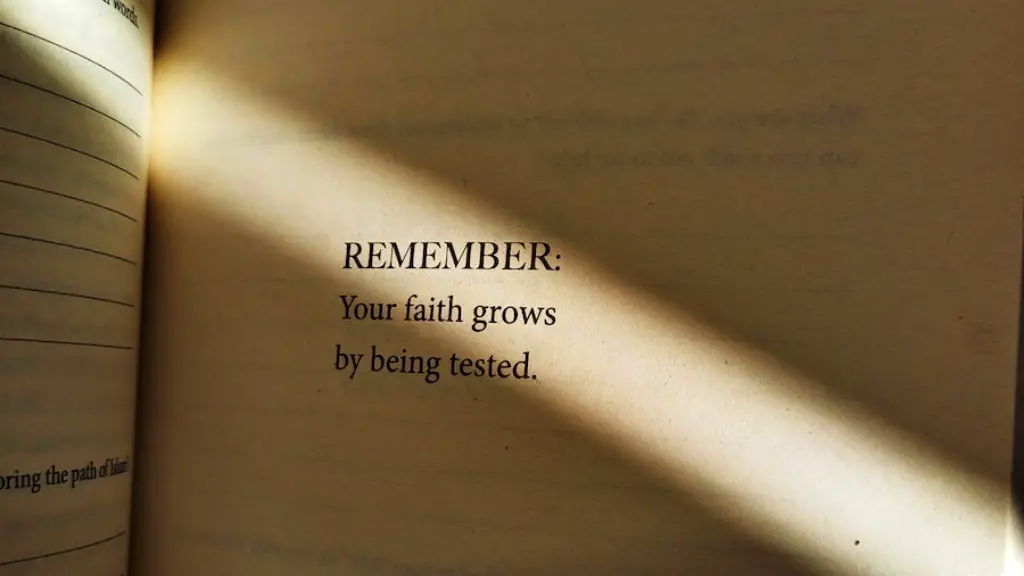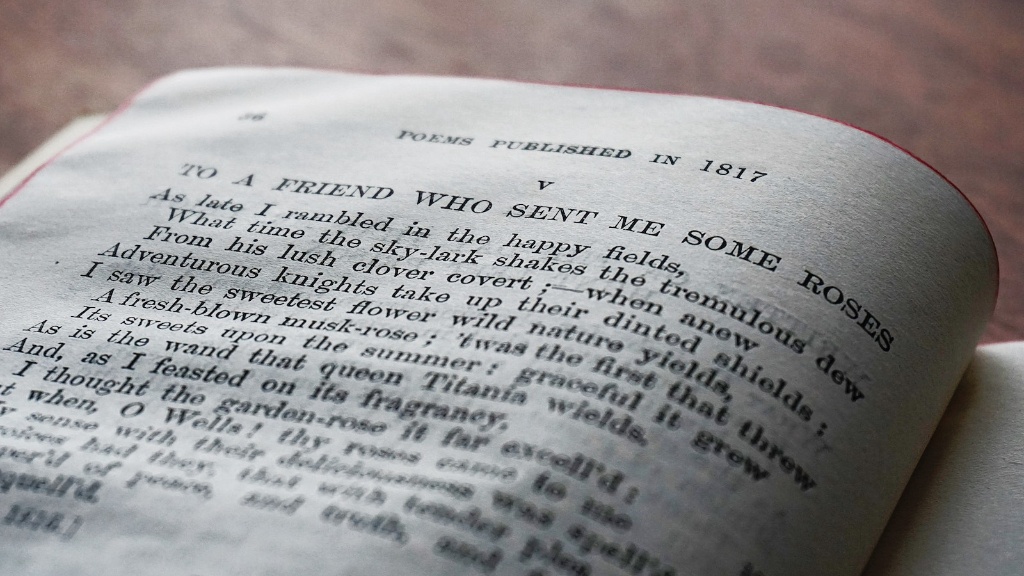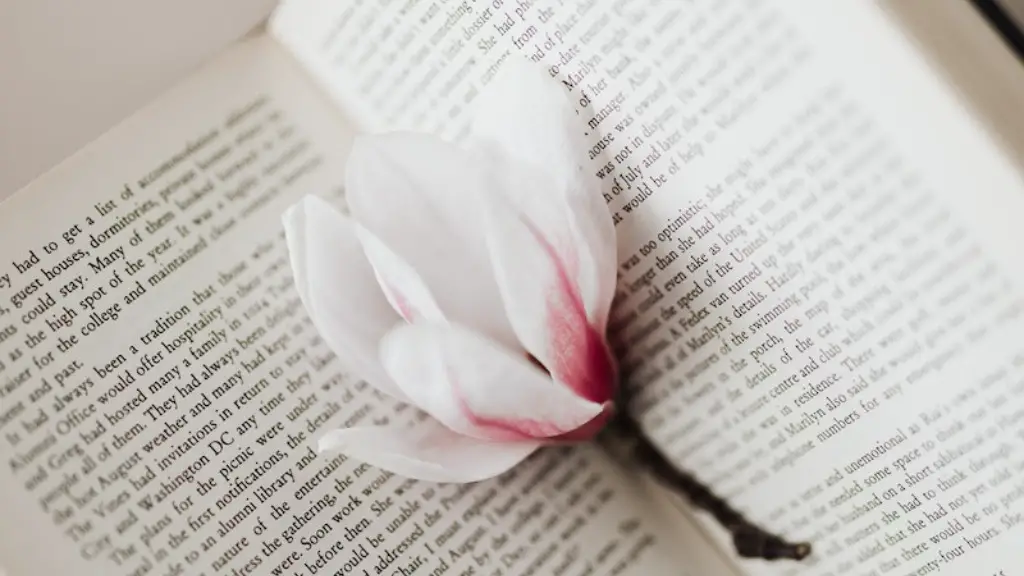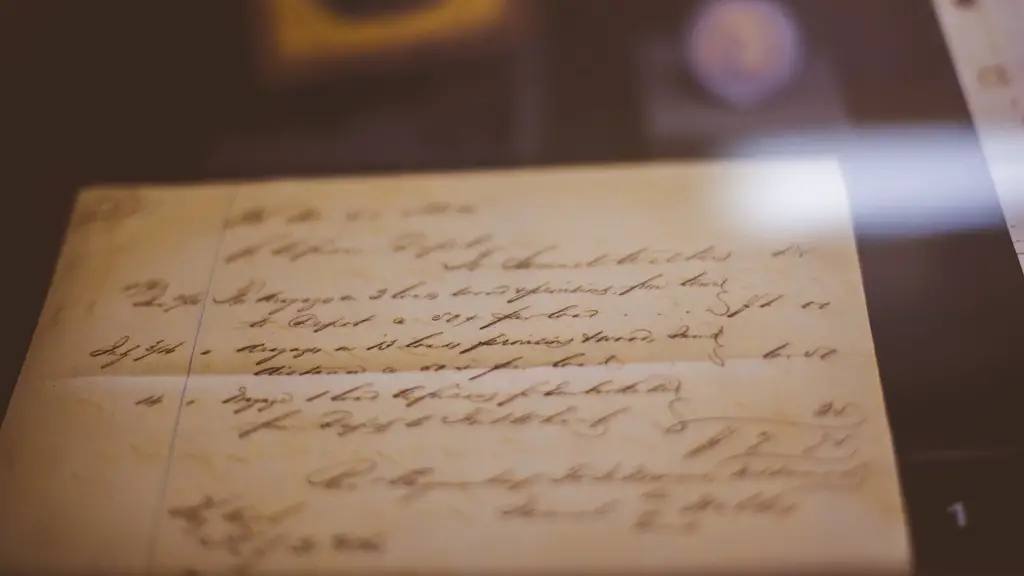Symbolism can be found in almost any piece of creative writing, but it is often more prevalent in poetry, as poets rely on images and symbols to convey feeling. Understanding symbols and their effects can be a valuable tool in a reader’s arsenal. With an understanding of symbolism in poetry, a reader can gain greater insight into the poet’s work and their intended message.
Symbolic imagery is used to create meaning that extends beyond the literal meaning of words. A symbol is an object, person, or situation with meanings beyond what is actually portrayed. In poetry, writers often use symbolic language to represent a deeper, universal message.
To identify symbols in poetry, one must start with finding the object or situation that stands out as meaningful to the poem. The most common symbols used in poetry are animals, objects, flowers, or weather. The next step is to examine the context of the poem and the symbol’s placement. What is the surrounding language? How does the symbol interact with other images in the poem? What mood does the symbol evoke?
To identify more complex symbols, it is often fruitful to consult the experts. Literary scholars, psychologists, and literary critics provide important perspectives in analyzing and interpreting symbolic imagery in poetry. Experts often consider elements such as history, culture, and political context when interpreting a poem’s symbolism.
Once a symbol has been identified, the reader should consider how it interacts with the poem and its meaning. Does it link to other images in the poem, or does it point to something in the real world? Is it used as a metaphor or an analogy? These are all questions one should consider when interpreting symbols in poetry.
To gain the greatest insight into the symbolism in a poem, it is important for readers to be open to different interpretations. Every person’s experience of a poem is unique, and everyone will see something different in the same poem. It is important to be mindful of one’s own preconceptions and biases when interpreting symbols in poetry.
Symbols in Context
When interpreting symbols in a poem, context is essential. What meaning is the poet conveying through the symbol? What message is being carried through the poem? It is important to consider cultural, historical, and political contexts that may inform the poem’s symbolism. For example, the imagery of a bird may represent freedom to one person and oppression to another.
A deeper understanding of a poem’s context often makes interpreting its symbolism easier. An understanding of the poet’s past works and biographical context can also be beneficial in interpreting a poet’s work.
Metaphors and Analogies
Often, symbols in poetry are used as metaphors and analogies. Metaphors are direct comparisons between two unrelated things, while analogies are extended comparisons. To understand metaphors and analogies in a poem, one must look for the poet’s intention and recognize what is being compared.
The use of metaphors and analogies can also be seen as a way for the poet to explore and express emotions. For example, a poet may compare a heartbroken person to a dead tree, or a situation may be likened to a sinking ship. Such comparisons can be used to evoke powerful emotions in the reader.
Symbolism and Tone
The tone of a poem is an essential part of its interpretation. Tone can be conveyed through the use of certain words, the structure of the poem, and the use of symbols.
Symbols often contribute to a poem’s mood and help to create the poem’s atmosphere. They can also be used to create powerful effects, as certain symbols may evoke certain feelings in the reader. For example, the use of religious symbols may elicit feelings of reverence and awe. On the other hand, the use of darker symbols such as death and destruction may evoke fear.
Imagery and Connotation
In addition to symbols, imagery is another important tool for a poet to convey meaning. Imagery uses language to create vivid mental images for the reader. It serves to help the reader connect to the poem’s theme and feel the emotions the poet is expressing.
The power of imagery lies in its use of connotation, which refers to the implied meaning of words. For example, a word like “peace” may evoke feelings of calm, while a word like “war” may evoke feelings of despair and destruction. It is important to consider the connotations of the words used in a poem, as they can give a greater insight into its meaning.
Role of Perspective
Perspective is a powerful tool for interpreting symbols in poetry. Poets often express their views through symbols, such as their opinion on a specific issue or their approach to life. To gain a better understanding of a symbol’s meaning, it is important to consider the perspective of the poet.
Often, the same symbol can mean different things to different people depending on their perspective. A symbol may represent one idea to one person and a completely different idea to another. It is important to consider the background and experiences of the poet when interpreting their work.
Evoking Feelings with Symbols
Symbols are a powerful tool in conveying a poet’s message, as they can evoke strong emotions in the reader. Different symbols can be used to create different feelings, such as joy, sorrow, surprise, or fear. To understand how symbols are evoking feelings in a poem, one must consider the context, the mood, and the symbols’ associations.
For example, the image of a storm may evoke feelings of danger and fear in some, while for others it may evoke feelings of joy and excitement. It is important to consider the connotations of a symbol and its relationship to the poem’s theme to understand how the poet is using it to evoke emotion.
Finding Get Deeper Meaning
Symbolism in poems can often be used to get at deeper meanings beyond the literal words. When interpreting symbols, it is important to consider how they are used in the poem and how they relate to the bigger picture.
Often, symbols represent something more universal, such as love, loss, triumph, or adversity. Understanding these deeper meanings can be essential in understanding a poet’s work. Symbols can also be used to represent abstract concepts, such as morality or strength, giving one insights into the poet’s view of the world.
Interpreting Symbolic Imagery
Symbolic imagery in poetry often relies on interpretation and inference. For example, a flower in one poem may mean love and compassion, while in another poem, it may signify tragedy and despair. To gain the greatest understanding of a poem’s symbolism, one must be open to different interpretations and consider all of the context surrounding it.
When interpreting symbols in poetry, it is important to consider the poet’s intention and perspective. One must also be mindful of one’s own biases and be prepared to consider a different interpretation if needed. With an understanding of symbolic imagery in poems, a reader can gain greater insight into the poet’s work and their intended message.
Using Symbolism to Rewrite History
Symbols in poetry can be used to rewrite history. By taking a symbol and changing its traditional meaning, the poet can create a new perspective on the past. This technique can be used to challenge the status quo and open up conversations about the past and the future.
For example, a writer may take the traditionally oppressive symbol of a snake and give it a new positive meaning. This technique can be used to explore history through a different lens and to encourage readers to reconsider their own views.
Exploring Different Meanings
Often, symbols are used to explore different meanings and ideas. Poets may use symbols to explore and express complex concepts, such as morality or justice. Symbolics in poetry can be used in a variety of ways, from metaphors to analogies to abstract images.
While understanding the literal meaning of a symbol is important, exploring alternative interpretations can be equally valuable. By considering different perspectives on a symbol’s meaning, one can gain a better understanding of the poet’s work and its overall message.
Finding Clarity in Ambiguity
Symbols in poetry can often be interpreted in many ways. Ambiguity is an important tool for a poet, as it allows them to explore multiple ideas and interpretations. By being open to alternative interpretations, one can gain a clearer understanding of a poem’s symbolism and its effect on the reader.
Symbols in poetry can often be seen as vehicles for exploring uncertainty and finding clarity. As readers, we can use them to explore new perspectives and find deeper meaning in the poem.





